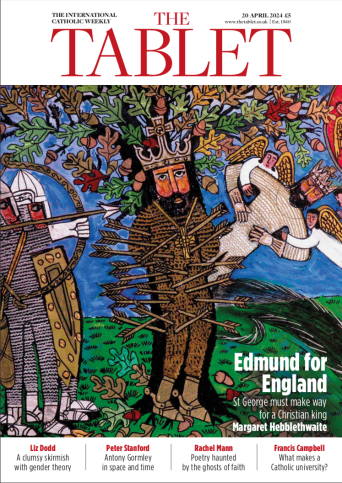Only a lunatic could enjoy strolling along Oxford Street in 2014. The bird-pecked remnants of kebabs, the chewing gum underfoot and the petrol-choked air add up to misery. Things could be worse, however. Spare a thought for our Victorian forebears. To be a Londoner during the nineteenth century was to encounter thick, black and sticky mud, largely composed of horse dung, on every major thoroughfare. If you ventured outside your home, you’d likely return with “a fine patina of soot” on your face. During the winter, all the foul smells and pollutants merged with dense fogs so, if you were old or suffering from pulmonary ailments, you would be fortunate to see another spring.
Lee Jackson’s fascinating book paints an intimate portrait of this “besmirched” landscape. In a way, the filth was inevitable. London’s population rose from one million to six million between 1801 and 1901. That made for an awful lot of trash. In the 1890s, there were 300,000 horses trotting down the city’s streets. This made for an awful lot of excrement.
At least you could wash off the foul residue that accrued from a trip to the shops, surely? Well, it rather depended on how rich you were. The vast majority of London’s population did not have easy access to clean running water. The residents of a tenement with a single tap were fortunate. Most had to rely on parish pumps or buckets of water bought from local merchants. As Jackson informs us, the people of Red Lion Street in Wapping thought themselves unusually blessed because there was a factory with a steam engine in their vicinity. Grotty hot-water waste ran down their gutters, which allowed clothes to be washed.
Thank goodness, then, for the bin men. Well, again, not really. People today complain, frequently and loudly, about the antics of refuse collectors. If the bin is too full, they refuse to empty it. We are spoilt. In Victorian London, rubbish collection was organised on a chaotic basis. You had to catch the dustman’s eye and if you refused to hand over a tip an “accident” was likely to ensue.
This all sounds rather bleak, and so it was, but Jackson’s book is also a tale of ingenuity and good intentions. There was money to be made from waste. Rags could be turned into paper, broken crockery could form the basis of road surfaces, and if you had a dead cat you could earn as much as sixpence from a furrier. The most precious resource was ash. Refined and mixed with clay, it could produce bricks: a precious resource in an expanding city. This serves as a useful reminder that recycling was not invented by eco-warriors in the late twentieth century.
As for the era’s good intentions, the book charts the endless initiatives to improve London’s environment. More often than not they resulted, as Jackson puts it, in “stalemate or defeat”. The city’s wildly expensive sewerage system only moved the problems upstream, while legislation aimed at reducing factory emissions did nothing to cure Londoners’ addiction to cosy domestic coal fires. Crucially, it was always the posher parts of town that reaped most of the benefits.
There were some triumphs, however. The arrival of public bath-houses was fitful and economically precarious but it achieved a great deal. Within six months of a Whitechapel establishment turning on its taps in 1845, 13,538 people had bathed themselves and 15,543 loads of washing had been laundered. The decision to create cemeteries outside the city was also a masterstroke, though, as so often, it was the well-heeled who benefited most.
And then, of course, there were the toilets. You could not pay me enough to use a public WC in central London these days, but back in the 1880s it was apparently a splendid experience: marble sinks, brass and mahogany fittings, and even a uniformed attendant on duty. These were pennies well spent.
This superb book places the humdrum business of keeping a city and its people clean in a detailed social and political context. We hear all about the well-intentioned reformers and the shift from local vestry control to grand metropolitan organisations. We also encounter the central paradox of Victorian London. This was the place that invented “sanitary science”; making the link between filth and disease, it was widely regarded as the grubbiest city in Europe. Its residents did have useful things to say, however. I rather like this nugget from a magazine in 1842: “Wash the body at least once a week” because “the vigour and hilarity of feeling you will experience will amply repay you for the labour.” Most Victorian Londoners would have gleefully followed this advice but simply didn’t have the opportunity.
Most of us take a lot for granted, these days. A few quid will buy you the most luxuriant washing powder you could ever desire. Back in Victorian London, some people had to make do with stale, concentrated urine: prized for its high ammonia content. I use the phrase “most of us” for a reason. London now, like London then, is one of the richest cities on earth. There may be less horse dung on the streets but it contains corners of stomach-churning squalor and is still home to thousands of utterly disenfranchised people. On this level, we are no better than the Victorians. Frankly, we do less than they did to improve the situation.
27 November 2014, The Tablet
Dirty Old London: the Victorian fight against filth
Far from godliness
Edmund for England
 Loading ...
Loading ...
Get Instant Access
Subscribe to The Tablet for just £7.99
Subscribe today to take advantage of our introductory offers and enjoy 30 days' access for just £7.99



What do you think?
You can post as a subscriber user...
User Comments (0)